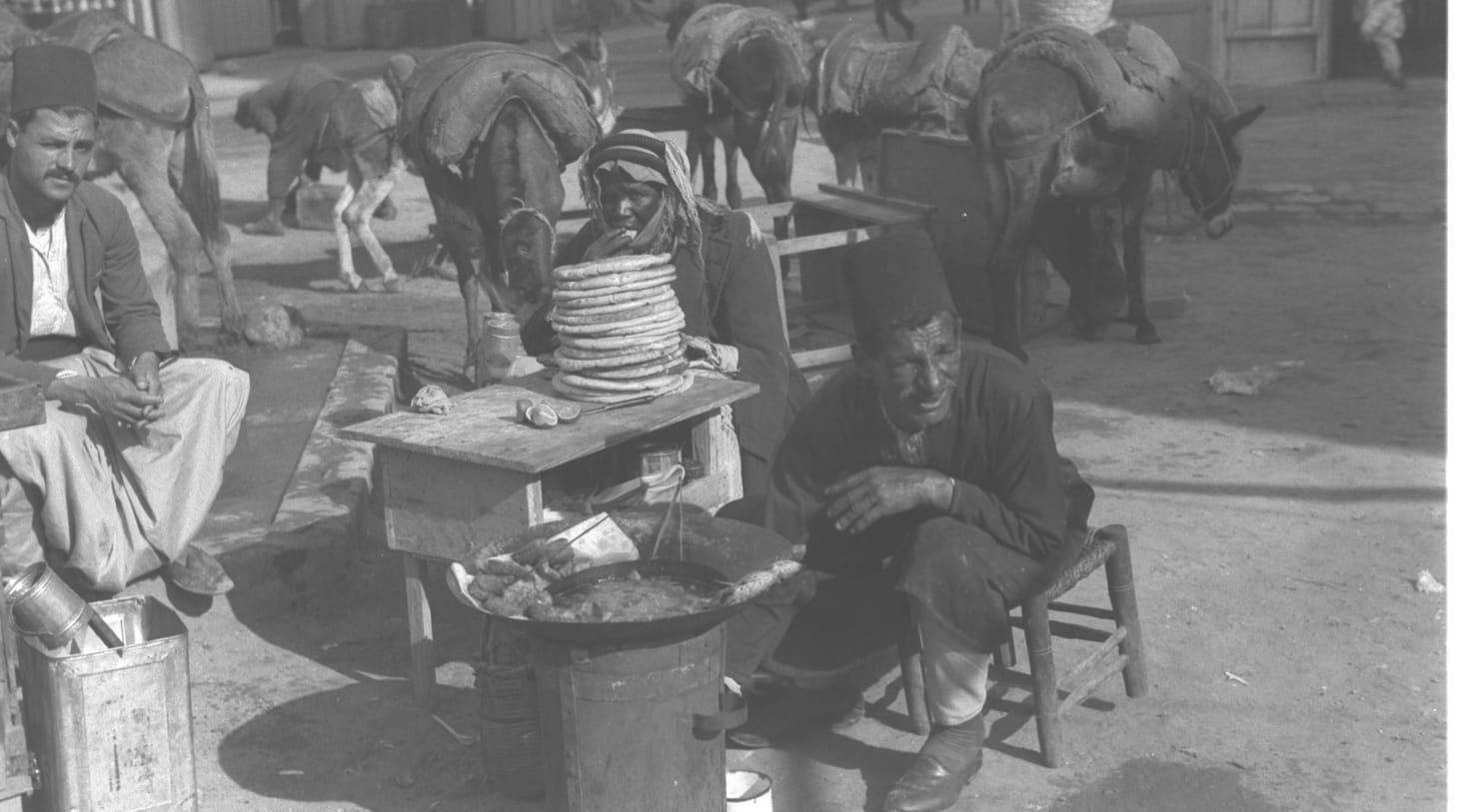“Identity is Always Complex”: Teaching the Shared Histories of Israelis and Palestinians
Discussion of how to move beyond teaching the Israeli and Palestinian conflict and instead teach the shared histories of Palestinians and Israelis from a world-historical perspective

When most teachers think about teaching Israeli and Palestinian history, they start with an idea of the “conflict.” I instead think about three restaurants in Jerusalem that are about two kilometers apart from each other. The first is Palestinian-owned Abu Shukri in the Old City’s Arab Quarter. I imagine plates of fresh falafel, creamy hummus, and hot pita. Abu Shukri, the son of a Turkish soldier who briefly lived in Jerusalem and married a Palestinian woman, established his restaurant in 1948. Just outside the Old City in the Russian Compound is the Yemeni Falafel Center. The founder is the son of a Yemeni Jew, whose father allegedly learned to make falafel as he passed through Egypt on his way from Yemen to Palestine in 1914. Since the Yemeni Falafel Center opened in its current location in 1976, they have been serving golden Yemeni-style falafel with Lahoh, a Yemeni bread. Just a ten-minute walk is pedestrian-only Ben Yehuda Street, which has been home to Moshiko Falafel since 1985. It’s the quintessential Israeli-style falafel stand with lots of salads that can be added to one’s sandwich. Behind the salads is their head-scratching slogan, “Some people buy falafel, here falafel buy people.”
Although Palestinians and Israelis often argue about who has the rightful claim to falafel and hummus (if you’re curious about the history of falafel, check out this article. If you want to know about the competing claims of ownership, check out this article.), we can instead approach falafel and these shops as a starting point for thinking about the shared and intertwined histories of the different people living in Jerusalem. We can see the different waves of residents and immigrants who have made Jerusalem home over the last 150 years and the cultural exchange that has taken place within the region and with its regional neighbors. Through the lens of falafel, we can begin to reframe how we teach Palestinian and Israeli history. Instead of thinking about the histories of Israelis and Palestinians as separate stories only linked by periodic outbursts of conflict, these falafel shops point to tightly interconnected histories of Israelis and Palestinians, both of whom also share links to other peoples from around the world.
The territory that Palestinians and Israelis presently share is a relatively small amount of land (there are lots of graphics comparing the size of Israel and New Jersey). Both claim this territory as their ancestral home and have put forth competing and often exclusive national histories to justify their right to rule this territory. At least half a dozen wars, frequent violence against civilian populations, and increased militarization in the greater Middle East region have exacerbated tensions between Israelis and Palestinians. Numerous external actors, such as the United States, the Soviet Union/Russia, the United Nations, and neighboring states, have also become engaged in the region to pursue their own interests. This outside involvement has frequently aggravated, rather than reduced, the tensions between Palestinians and Israelis.

These falafel shops point to a more global approach to the shared histories of Israelis and Palestinians and their relationship. We can better teach about these shared histories in the world history classroom through the lenses of nineteenth and twentieth-century nationalism, imperialism, colonialism, decolonization, the Cold War, and globalization and focusing more on cultural and social history. Both Palestinians and Israelis have constructed strong national identities, based on historical experiences, that shape how they perceive the disputed land, present each nation as monolithic, and sometimes obscure the experiences of the other. Despite the unique factors that shape the often conflicted relationship between Palestinians and Israelis, a world-historical approach helps us to see historical parallels and to view this situation as more than just a conflict.



